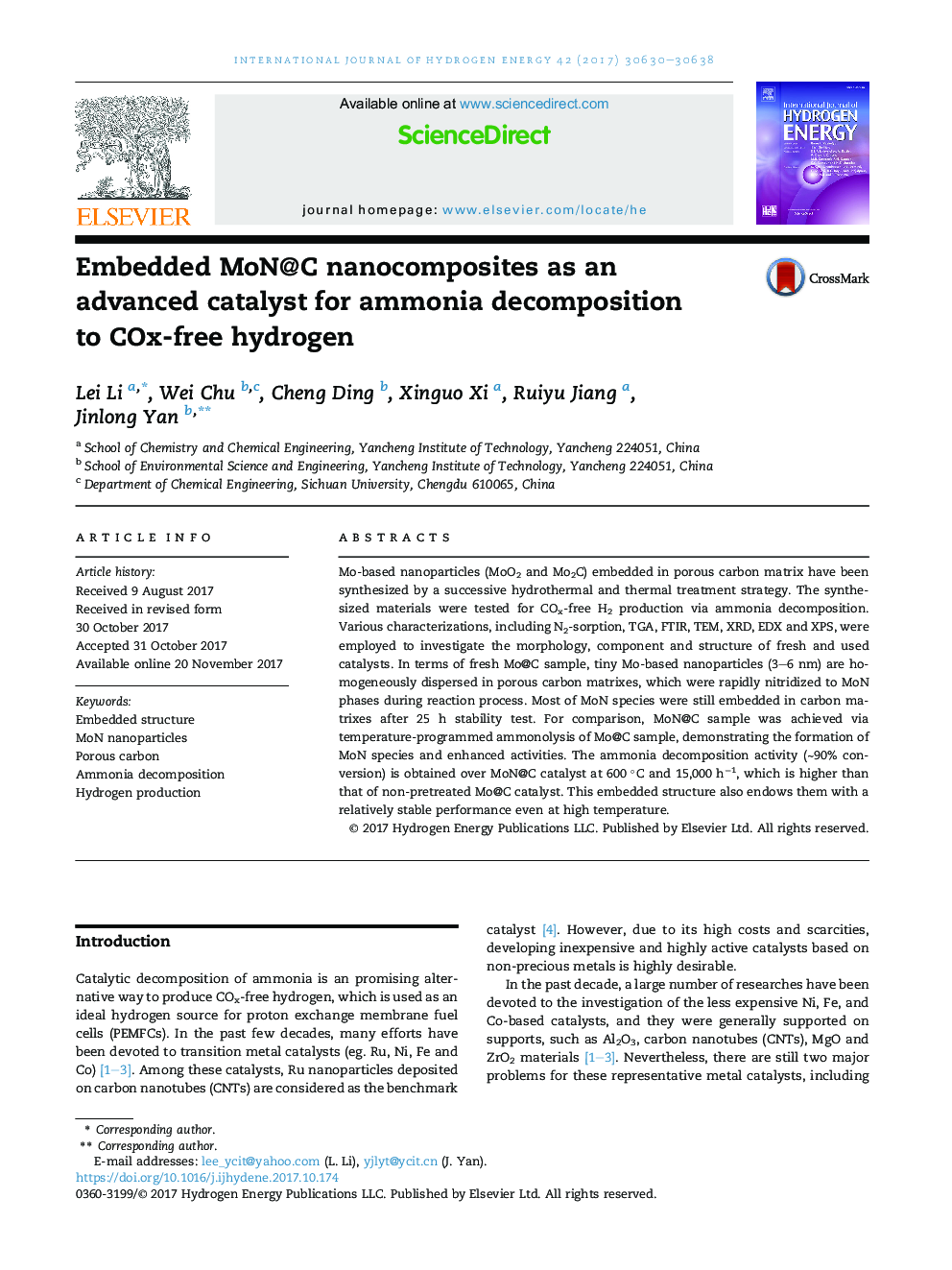| Article ID | Journal | Published Year | Pages | File Type |
|---|---|---|---|---|
| 7708677 | International Journal of Hydrogen Energy | 2017 | 9 Pages |
Abstract
Mo-based nanoparticles (MoO2 and Mo2C) embedded in porous carbon matrix have been synthesized by a successive hydrothermal and thermal treatment strategy. The synthesized materials were tested for COx-free H2 production via ammonia decomposition. Various characterizations, including N2-sorption, TGA, FTIR, TEM, XRD, EDX and XPS, were employed to investigate the morphology, component and structure of fresh and used catalysts. In terms of fresh Mo@C sample, tiny Mo-based nanoparticles (3-6 nm) are homogeneously dispersed in porous carbon matrixes, which were rapidly nitridized to MoN phases during reaction process. Most of MoN species were still embedded in carbon matrixes after 25 h stability test. For comparison, MoN@C sample was achieved via temperature-programmed ammonolysis of Mo@C sample, demonstrating the formation of MoN species and enhanced activities. The ammonia decomposition activity (â¼90% conversion) is obtained over MoN@C catalyst at 600 °C and 15,000 hâ1, which is higher than that of non-pretreated Mo@C catalyst. This embedded structure also endows them with a relatively stable performance even at high temperature.
Related Topics
Physical Sciences and Engineering
Chemistry
Electrochemistry
Authors
Lei Li, Wei Chu, Cheng Ding, Xinguo Xi, Ruiyu Jiang, Jinlong Yan,
